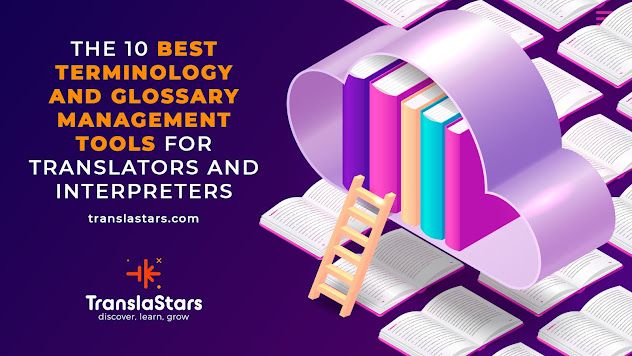5 New Year’s Resolutions for Translators
New year, new me! January is the perfect time to think about your new professional goals and how to achieve them, especially if you are a freelance translator. Whether you are an experienced language professional or a freshly graduated translator, thinking about (at least) 5 New Year’s resolutions is fundamental: it will help you freshen up your business strategy (and hopefully stick to it), but also focus on the latest industry trends and how to keep up with them.
Are you ready to fill your 2022 bucket list? Here are
a few suggestions:
Table of contents:
1. 1 Master
the art of translating SEO and SEA related content
2. 2. Stop
feeling the freelancer fear
3. 3. Add
another feather to your cap
4. 4. Consider
learning more about audiovisual translation
5. 5. Make
inclusivity a must-have, not a nice-to-have
1.
Master
the art of translating SEO and SEA related content
The pandemic has had a huge negative impact on the global
economy, but many companies managed to thrive despite the restrictions. How? According
to a McKinsey Global Survey on the topic, “consumers have moved dramatically
toward online channels, and companies and industries have responded in turn”. For
translators, this business shift means only one thing: SEO and SEA localization are more important than ever, since every firm is boosting its online presence.
And there is more: “many of these changes could be here for the long haul”, McKinsey’s
study points out.
Do you want to acquire A-Z SEO and SEA localization
skills? Then “Translation of SEO and SEA related content” is the best fit for you: a 2-hour deep dive into marketing
translation with Alfonso González, Senior Localization Manager at Pathwire.
SEO, SEA, SEM, marketing translation, readability and Google
algorithms already sound familiar to you? Join our “SEO & SEA Localization” Bootcamp that will take place from April 25th
to April 29th : 5 days full of dynamic content delivered in English
featuring real life examples in French, German, and Spanish.
2.
Stop
feeling the freelancer fear
You know what I’m talking about: the fear that work
will dry up, clients will never e-mail you again and everything will go
downhill from here. “A quiet month can be miserable,” says a London-based
freelance filmmaker interviewed by Creatives Lives in Progress. “You can be really busy and looking forward to enjoying a
quiet week or two; but then two weeks become four, and all of a sudden you’re
kicking around trying to figure out why”. So relatable, right?
Here’s the only solution to fight that fear: learn
winning client acquisition strategies, build your online presence and create
the right professional network. Helen Hadley, translator, copywriter and
digital marketing specialist, will help you do so in her amazing webinar “Strategies to Boost Your Client Base”.
3.
Add
another feather to your cap
Diversifying your income stream is also key if you
want to maintain a steady pipeline of new projects and assignments. One of the
most valuable skills you could add to your resume is copywriting, or the
process of writing persuasive words that motivate people to take a specific
action. As a language professional, you work with words and sentences on a
daily basis, so you already have an edge. Also, the copywriting techniques that
you will learn could also come in handy for your own business, so it’s a
win-win situation!
“MD Copywriting forTranslators” is the best course for you to learn the basics of direct-response copywriting and content writing.
If you want to take a step
further, try Alfonso González’s webinar, “Writing forLocalization. Localizing Copy”: you will learn how to prepare content
that can be easily localized, categorize and identify copy (ads, blog posts,
web content, etc.) and so much more!
4.
Consider
learning more about audiovisual translation
Amazon Prime Video, Disney+, Netflix, Hulu: the
streaming industry is booming. At once, many companies start to value
accessibility, enabling access for people with disabilities to their services
or their social media contents. That’s why subtitling and closed captioning are
fundamental to reach new audiences and to prove that diversity, equity and
inclusion (DEI) policies are more than just words.
Learn from Kelly O’Donovan, audiovisual translator and
founder of GOSUB, all the elements of subtitling, closed captioning, subtitling
for the deaf and hard of hearing and quality assurance by attending her “ProD+T
Subtitling and Closed Captioning” course with paid
practical experience included.
5.
Make
inclusivity a must-have, not a nice-to-have
Translation’s main goal is to convey a message in
another language. But how can you communicate effectively if you choose words
that harm other people and discriminate against them?
To be aware of your lexical choices and include as
many people as possible, try Helen Hadley’s webinar “Inclusivity.
Creating people-friendly translations and texts”: you will learn how to use various types of
inclusive language (gender-neutral, people-first, history-conscious, etc.) and
how to incorporate them into your texts and translations.
Pro-tips: browse our new subscription plans here to choose the trainings that best suit your needs!
Do you want to keep up with our latest news and read our tips and tricks? Click here to subscribe to our newsletter: you will receive €10 off your first individual course or your new subscription plan.
TranslaStars’ team wishes you a Happy New Year!





Comments
Post a Comment